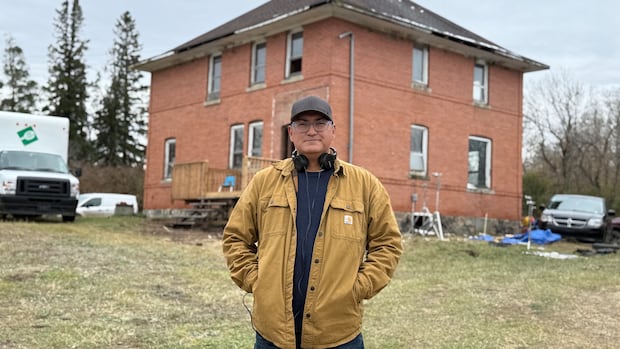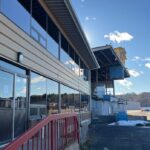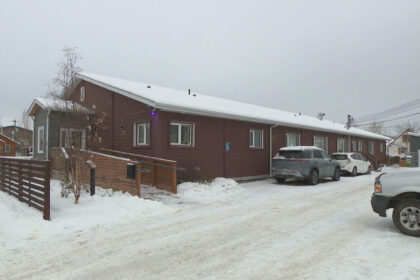Saskatchewan·NewWhen Rueben Martell was looking for locations to shoot his Indigenous love story A Life Less Empty, he knew he wanted it to be on a reserve in his home province of Saskatchewan. After months of searching, he and his film crew finally found the ideal location — an abandoned house on Pheasant Rump Nakota Nation, about 150 kilometres southeast of Regina.Filming underway at abandoned house on Pheasant Rump Nakota NationDarla Ponace · CBC News · Posted: Oct 16, 2025 6:00 AM EDT | Last Updated: 8 minutes agoRueben Martell is the director and writer of A Life Less Empty. (Darla Ponace/CBC)When Rueben Martell was looking for locations to shoot his Indigenous love story A Life Less Empty, he knew he wanted it to be on a reserve in his home province of Saskatchewan. But the original location at Waterhen Lake First Nation — where he grew up — fell through, and Martell was worried. After months of searching, he and his film crew finally found the ideal location — an abandoned house on Pheasant Rump Nakota Nation, about 150 kilometres southeast of Regina.“At the 11th hour, Pheasant Rump came in and saved us,” said Martell. His crew started shooting last week at a two-storey, brick-exterior farmhouse constructed in the 1930s. The house sits in an isolated area behind a long tree line on the First Nation’s edge, which makes it the perfect location for a film. The film crew for A Life Less Empty works on location on Pheasant Rump Nakota Nation. (Darla Ponace/CBC)For Martell and his film crew, finding the location felt like serendipity. That’s because the location has a special significance. Pheasant Rump Nakota Nation regained its independence as a First Nation in 1990, having been amalgamated with White Bear First Nation in 1901, when its land was surrendered. In 2022, the band received formal recognition as a Treaty 4 band.While the land wasn’t “given back” in the traditional sense, a land settlement agreement in 1990 between the government and the descendants of the original band led to its purchase. The farmhouse was on the land the First Nation acquired. Now, the filmmakers are hiring local people from the band to be extras in the movie, and brought out mentors to help teach some acting skills. Martell said that was his goal, to create an Indigenous film and give equal opportunity to Indigenous actors, plus keep it all in Saskatchewan on a First Nation. “I wanted to see more Native faces in similar stories, but taking a Native tone, not a westernized version of what our story is,” he said. “A lot of the time you see a lot of films being made and written. They want our voice, but they want to write the script for us.”Martell aimed to create an authentic Indigenous story with an Indigenous narrative for this film.He said everyone has been working well together on the movie site, with the community offering strong support and a warm welcome.Indigenous actor Sera-Lys McArthur is producing this film. The house featured in the film was once home to her grandparents, and later her father, but had been vacant for nearly 15 years.The house featured in A Life Less Empty was once home to producer Sera-Lys McArthur’s grandparents, and later her father, but has been vacant for nearly 15 years. (Germain Wilson/CBC)“Originally, we weren’t sure where to film,” McArthur said. “I told my dad, and he was like, ‘Well, my house is just sitting there.’”She said they discussed it with the band, and the chief and council supported using the location.And now, the film is breathing life back into it, she said. “It’s just a really beautiful, sweet story about people finding their true path in life,” said McArthur. One of the actors in the film is Nathan Alexis, from Alexis Nakota Sioux Nation in Alberta. He said the story explores intergenerational trauma and shows how people experience it differently — and how they use healthy coping mechanisms, or not-so-healthy ones. “We see someone who’s in the middle of that … and someone who overcomes it,” he said. “They learn to live with it, and I think that’s beautiful.” The film is funded by the Indigenous Screen Office and Creative Saskatchewan, and is scheduled for release next summer.ABOUT THE AUTHORDarla Ponace is a Saulteaux woman from Zagime Anishinabek First Nations. She started as an associate producer in the Indigenous Pathways program at CBC. She is currently working with CBC Saskatchewan as a reporter. You can email her at darla.ponace@cbc.ca with story ideas.
Indigenous-led film finds perfect home on First Nation in Sask.












